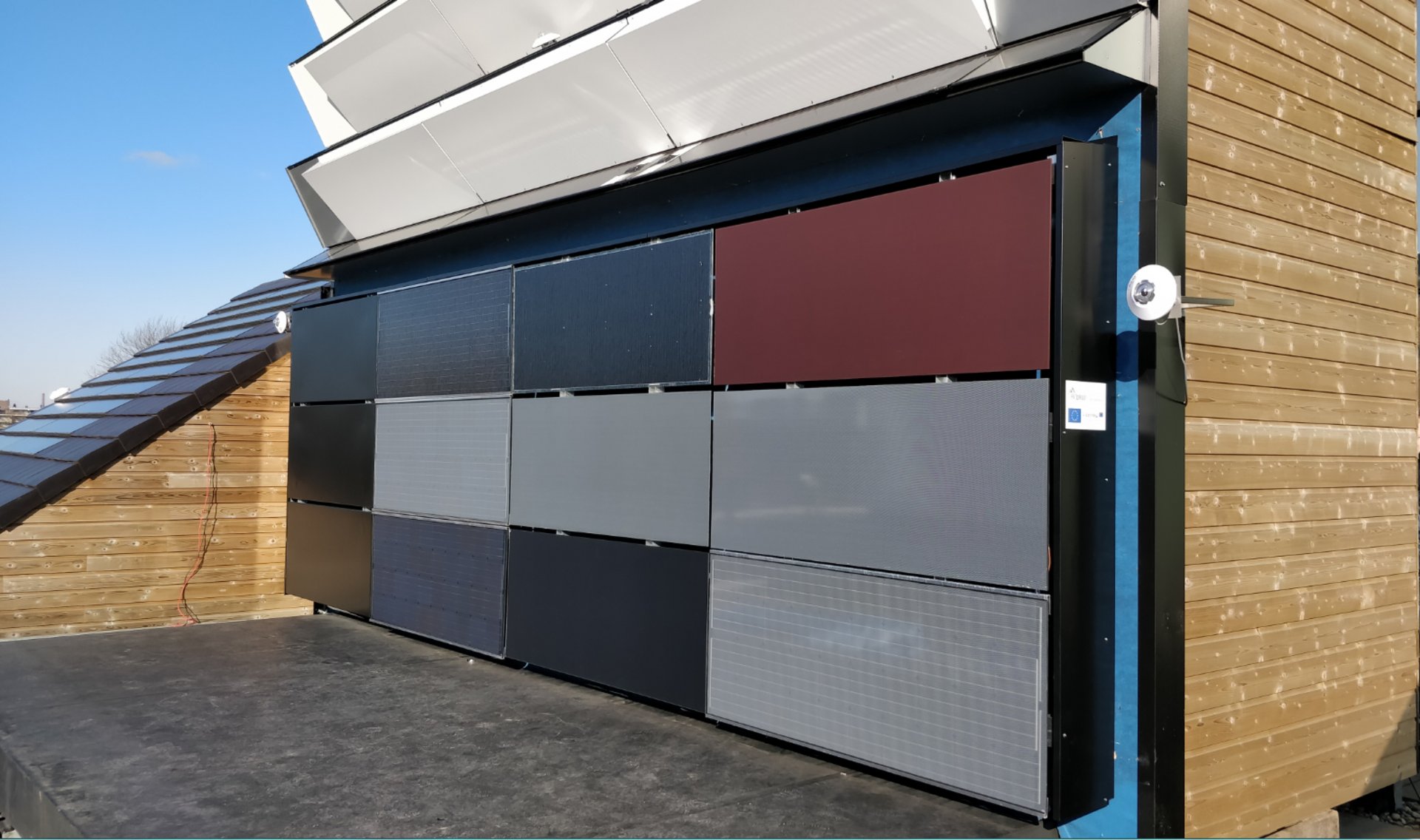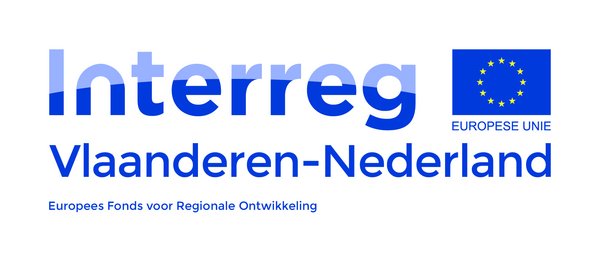PVOpmaat: CustomFit: the integration of solar panels
Making the integration of solar panels in buildings more efficient, aesthetically pleasing and less expensive. This is the objective of the Interreg project PV OpMaat (CustomFit). A regional consortium of 8 knowledge institutes and a large number of companies bundled their efforts in a collaborative project that will run until the end of 2018..
Duration
January 2016 - July 2019Partners
Project Manager
PVOpmaat
Making the integration of solar panels in buildings more efficient, aesthetically pleasing and less expensive. This is the objective of the Interreg project PV OpMaat (CustomFit). A regional consortium of 8 knowledge institutes and a large number of companies bundled their efforts in a collaborative project that will run until the end of 2018.
The project is being implemented within the scope of the Flanders-Netherlands Interreg programme, with financial support from the European Regional Development Fund, the provinces Noord-Brabant, Flemish Brabant, Flemish and Dutch Limburg, the Netherlands ministry for Economic Affairs, and the ministry for North Rhine-Westphalia.
Based on newly developed manufacturing methods, the objective of the project is to change electricity-producing solar cell materials in such a way that they can be integrated perfectly in construction elements. Examples of such products are already on the market, but the ambition to customise the production for specific dimensions in the construction industry is new and caters to the growing market for renovation and reducing the energy consumption of homes and buildings in answer to public policy.
The role of the Building Performance group is to facilitate the application of high-potential Building Integrated PhotoVoltaics (BIPV) concepts from a building physics perspective by combining modelling & simulation with experimental research. Next to this we look into the opportunities and constraints of customized thin film technology used in BIPV, evaluate the real potential of customized thin film technology and propose strategies to successfully develop thin film technology for the (BIPV)market. The performance of full-scale colored BIPV modules, produced using different coloring techniques, is currently being monitored in the SolarBEATtest set-up.
Project Related Publications
-
A. Bognár,R.C.G.M. Loonen,J.L.M. Hensen
An unsupervised method for identifying local PV shading based on AC power and regional irradiance data
Solar Energy (2018) -
Á. Bognár,R.C.G.M. Loonen,J.L.M. Hensen
Modeling reflected irradiance in urban environments – a case study for simulation-based measurement quality control for an outdoor PV test site
35th European Photovoltaic Solar Energy Conference and Exhibition (2018) -
Chris Tzikas,Maarten Dörenkämper,M.N. van den Donker,Á. Bognár,R.C.G.M. Loonen,J.L.M. Hensen,Wiep Folkerts
Outdoor characterization of colored and textured prototype PV facade elements
35th European Photovoltaic Solar Energy Conference and Exhibition (2018) -
Á. Bognár,R.C.G.M. Loonen,J.L.M. Hensen
Identifying local PV shading in urban areas based on AC power and regional irradiance measurement
9e Editie Sunday / Onderzoek Ontmoet Praktijk, 8 November 2017, Bussum, Nederland (2017) -
F.M. Vossen
Technology - prototype - product : a two-step approach to bring building-integrated thin film PV to the market
(2017)

Making the integration of solar panels in buildings more efficient, aesthetically pleasing and less expensive. This is the objective of the Interreg project PV OpMaat (CustomFit). A regional consortium of 8 knowledge institutes and a large number of companies bundled their efforts in a collaborative project that will run until the end of 2018.
The project is being implemented within the scope of the Flanders-Netherlands Interreg programme, with financial support from the European Regional Development Fund, the provinces Noord-Brabant, Flemish Brabant, Flemish and Dutch Limburg, the Netherlands ministry for Economic Affairs, and the ministry for North Rhine-Westphalia.
Based on newly developed manufacturing methods, the objective of the project is to change electricity-producing solar cell materials in such a way that they can be integrated perfectly in construction elements. Examples of such products are already on the market, but the ambition to customise the production for specific dimensions in the construction industry is new and caters to the growing market for renovation and reducing the energy consumption of homes and buildings in answer to public policy.
The role of the Building Performance group is to facilitate the application of high-potential Building Integrated PhotoVoltaics (BIPV) concepts from a building physics perspective by combining modelling & simulation with experimental research. Next to this we look into the opportunities and constraints of customized thin film technology used in BIPV, evaluate the real potential of customized thin film technology and propose strategies to successfully develop thin film technology for the (BIPV)market. The performance of full-scale colored BIPV modules, produced using different coloring techniques, is currently being monitored in the SolarBEATtest set-up.
